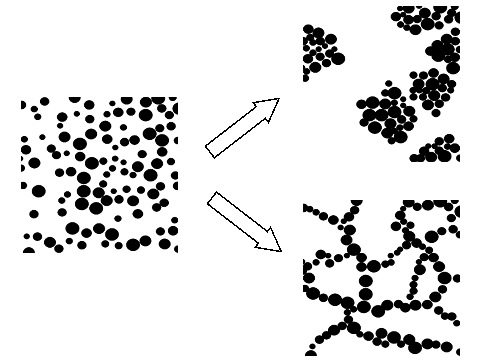Oil/water emulsion gels studied by SESANS
Systems of practical relevance to the food industry are often hard to investigate non-invasively. This is caused by the fact that most food emulsions are opaque and soft materials. The relevant length scales are often micrometers. SESANS operates at these length scales and benefits from the high penetrating power of neutrons. SESANS yields directly the scattering length density correlation function, which facilitates visual data-analysis.
With SESANS we investigated the fat droplet structure of different emulsion gels after storage at fixed temperature or after temperature cycling. Upon temperature-cycling, it is found that the fat droplet clusters increase in size, next to the droplets themselves getting larger as well.

We present a basic model to show how SESANS exposes the processes occurring in the emulsion in the cartoon above: The emulsion is initially a dispersion of polydisperse spherical fat droplets. After cycling they can aggregate into larger droplets as indicated in the higher cartoon, or into network, as indicated in the lower cartoon. The difference in structure comes out clearly in density correlation function (as measured by SESANS).
For further reference
Effect of processing on droplet cluster structure in emulsion gels
Bot, F.P. Duval, and, W.G. Bouwman
Food Hydrocolloids 21 844–854 (2007)
http://dx.doi.org/10.1016/j.foodhyd.2006.09.012
